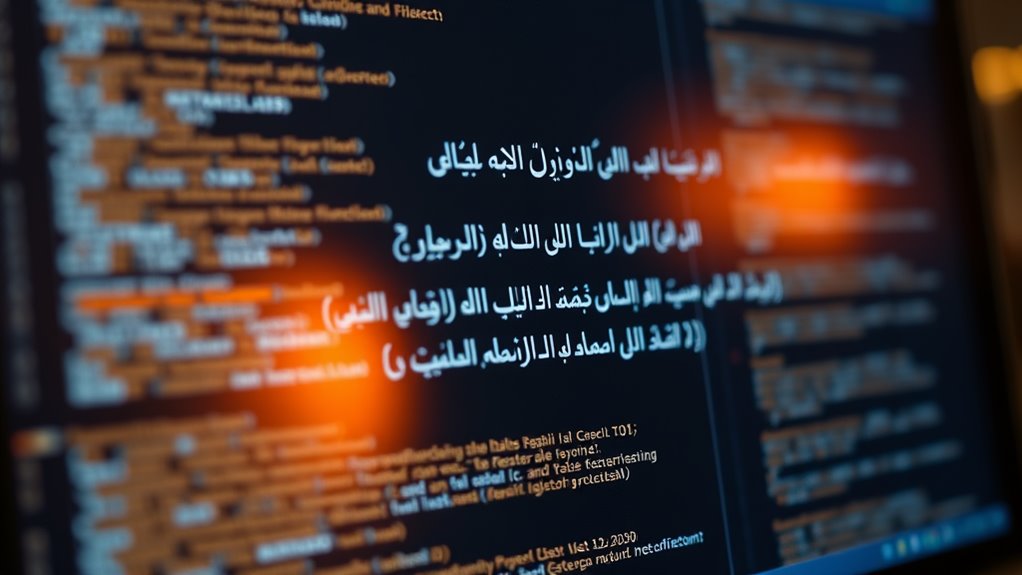You’re about to uncover the intricacies of Arabic language processing, where AI weaves a complex tapestry of translation and understanding. It’s a realm where you’ll find the beauty of language intertwined with technology. What secrets will you uncover?
Experience the thrill of online gaming — check out Best Real Money Casino Games and play your way to real rewards!

Advances in Arabic Language Translation
As you delve into the realm of Arabic language translation, you’ll find that advances in this field have been largely driven by the need to bridge the cultural and linguistic gap between Arabic and other languages.
You’re navigating a complex web of dialects, nuances, and context-dependent expressions.
Arabic’s unique script and grammatical structure pose challenges, but AI-powered tools are rising to meet them.
You’re witnessing a new era of precision and fluency in translation, one that’s redefining the boundaries of cross-lingual communication.
This fusion of technology and linguistics is opening doors to fresh perspectives and deeper understanding.
Improving Text Summarization and Sentiment Analysis
Many advances in Arabic language processing hinge on your ability to distill complex texts into concise, meaningful summaries, and to discern the emotional undertones that underpin them.
You’re tasked with uncovering the essence of a text, stripping away unnecessary details to reveal its core message. As you analyze the sentiment behind the words, you’re able to grasp the emotional resonance that drives human connection.
By improving text summarization and sentiment analysis, you’ll unlock new insights into the Arabic language, enabling more effective communication and deeper understanding.
You’ll navigate the nuances of language with precision.
Speech Recognition in Arabic Language
While delving into the intricacies of Arabic language processing, you’ll find that speech recognition plays a vital role in deciphering the spoken word, with your ability to pinpoint distinct sounds and dialects crucial in developing effective systems.
You’re tasked with navigating the complexities of Arabic phonetics, where nuances in pronunciation can significantly impact recognition accuracy.
As you refine your approach, you’ll uncover the unique challenges of Arabic speech recognition, from dialectal variations to rich vowel patterns, and develop innovative solutions to tackle these obstacles, ultimately enhancing the precision of speech recognition systems.
Deep Learning Applications in Arabic NLP
Deep learning’s transformative power is harnessed when you delve into Arabic NLP, where neural networks can unravel the complexities of this Semitic language.
You’ll find that recurrent neural networks, in particular, are well-suited to modeling the patterns and structures that underlie Arabic.
You’ll discover that deep learning enables you to capture the nuances of Arabic morphology and syntax, allowing for more accurate text classification and sentiment analysis.
As you explore this realm, you’ll uncover the potential of deep learning to revolutionize Arabic NLP, revealing new insights and possibilities for natural language understanding.
Challenges in Arabic Language Processing
As you navigate the complexities of Arabic language processing, you’ll encounter a multitude of challenges that test your mettle, for the unique characteristics of this Semitic language can thwart even the most sophisticated algorithms.
You’ll find that Arabic’s rich morphology and syntax pose significant hurdles. Its complex system of consonants and vowels, combined with a rich array of dialects, demands precise handling.
You must contend with limited resources, such as annotated datasets, to develop effective models.
These challenges require innovative solutions, making Arabic language processing a fascinating, yet daunting, task. You’ll need to adapt, innovate, and refine.
Future Applications of AI in Arabic Language
Because Arabic is a language of immense cultural and historical significance, you’ll find that its intersection with AI unlocks a vast array of possibilities, from enhancing language instruction to revolutionizing the way you interact with digital media.
You’ll discover new avenues for linguistic exploration, as AI-driven tools facilitate nuanced analysis and comprehension.
As you delve into this realm, you’ll uncover innovative applications, such as personalized learning platforms and intelligent language translation systems, that will reshape the future of Arabic language processing and transform your relationship with this ancient, beautiful language.
You’ll be at the forefront of this evolution.
losing Remarks
You’re witnessing AI’s transformative power in Arabic language processing, as it weaves a tapestry of nuanced understanding, bridging cultural divides. With each advancement, you’re drawing closer to a world where language barriers dissolve, and the beauty of Arabic is revealed in all its complexity, fostering a deeper, more lyrical connection with the language and its people.